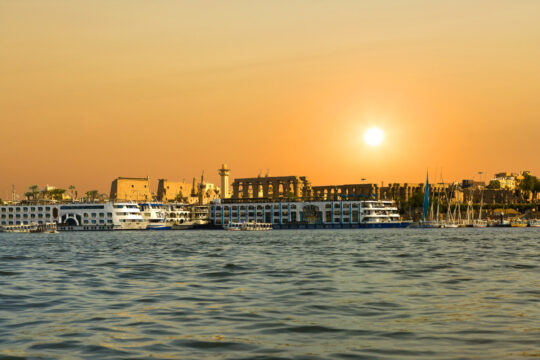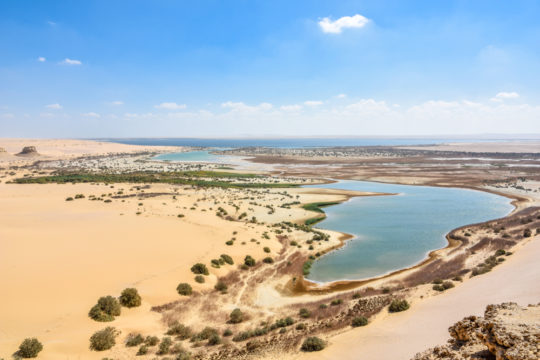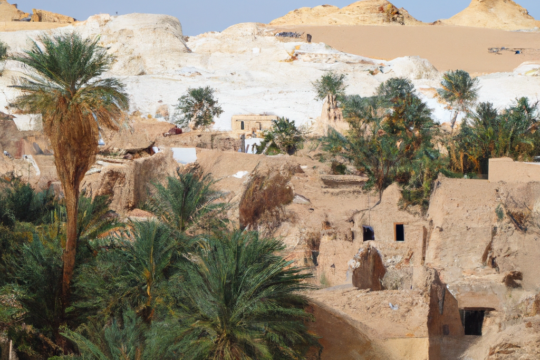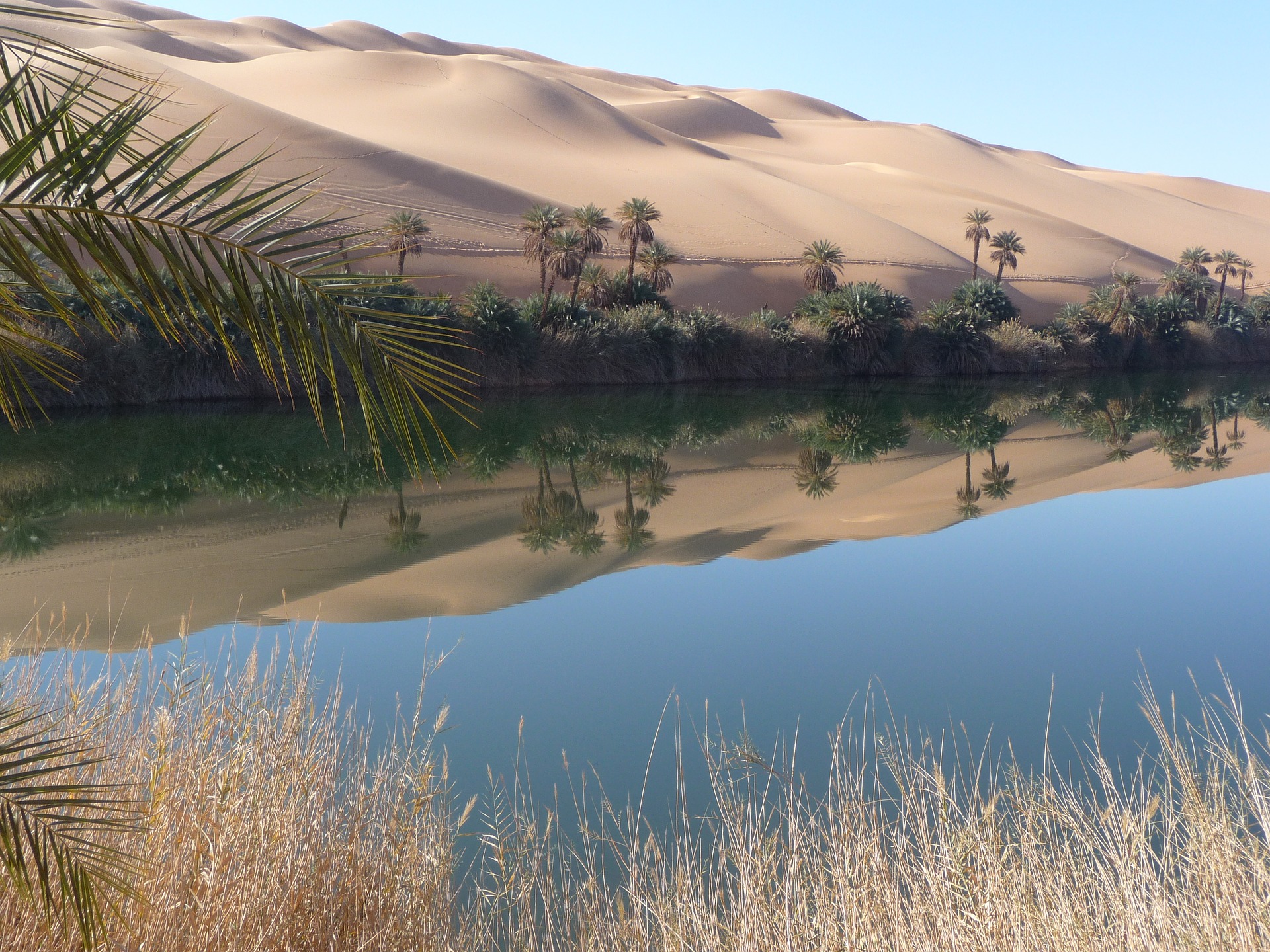
The Siwa Oasis is an oasis in the heart of the Sahara Desert and one of the most inaccessible parts of Egypt. Located in the western part of the nation, not far from the Libyan border, and reachable via the seaside city of Marsa Matrouh. Siwa is protected as a cultural landmark since it is encased in a large desert. Siwa Oasis is reminiscent of Egypt’s most distant and exotic location, Gilf Kebir National Park. In reality, the oasis is linked to the road system that serves the north shore and the western oasis, so getting there is less of an adventure in the desert and more of a simple commute.
Why you should visit Siwa?
The Siwa Oasis’s verdant foliage is a welcome sight after hours spent traversing Egypt’s desert. A desert landscape gives way to a tropical paradise complete with palm palms. The town of Siwa exemplifies the peaceful country lifestyle. Despite the bustle that might occur at times, the tiny center exudes a sense of serenity and tranquillity. Sand streets, palm tree-lined boulevards, and mudbrick homes may all be found here.
The Siwa Oasis is the perfect spot for a rejuvenating getaway. Surprisingly huge for its location, Siwa is home to several attractions. The oasis’s pristine natural surroundings take precedence. In addition to the hot springs and salt mining pools, there are more than 300 springs that provide potable water. Every one of them is located in a picture-perfect environment, and many of them even have cafés where you can sit with a cup of tea or a glass of fresh juice and take it easy.
In addition, the town is surrounded by beautiful gardens and groves of palm trees. Dunes of the Great Sand Sea may be seen on the outskirts of town. Siwa Oasis is a fantastic location for a true desert adventure. Take a sail among the dunes or spend the night in a desert tent beneath the stars.
Is it safe to visit Siwa?
It is completely risk-free to go to the Siwa Oasis. We’d even go so far as to say that visitors here feel safer than they would in Cairo or Alexandria. Siwa Oasis may be off the main route, but it nonetheless sees a steady stream of visitors—dozens each day. All solo or female travelers are included in this category. While Siwa Oasis is traditionally conservative, the rising number of female travelers has changed attitudes there. The courtesy of covering your knees and shoulders is still valued.
How many days do you need for the Siwa tour?
Highly suggested is a stay in Siwa Oasis of at least three to four days. You’ll get the most out of your time at Siwa Oasis if you calm down and appreciate the tranquil atmosphere. It’s a long way to go, and once you get there, you’ll need to rest up before continuing.
What is the best time to visit Siwa?
During October and March, Siwa Oasis has mild temperatures, making it the ideal time to visit. Sometimes, the winter nights may be rather frigid. Even though it will still be warm, September and April are transition months and are still great times to visit. Avoid going during the summertime. It’s not only that temperatures rise to dangerous levels, but that many businesses choose to shut down for the season.
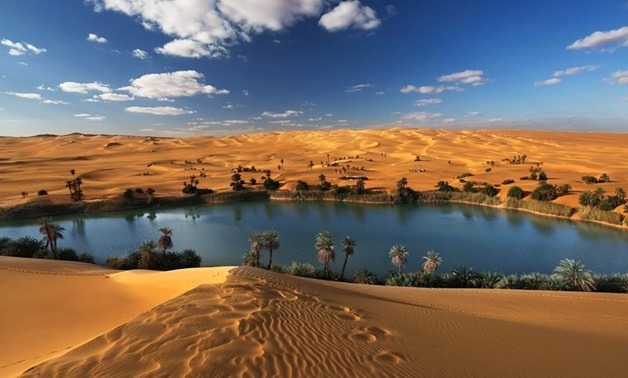
Top Things to Do in Siwa
1. Visit the Shali Castle
The remains of a medieval stronghold called Shali may be seen in the center of Siwa. This large complex of apartments was formerly home to hundreds of people. Some people living on the outskirts still do.
Mud and kershef salt bricks (a local building material) were used in its construction. To this day, these bricks remain the standard for the construction of Siwa dwellings. Homes are insulated with mud, making them comfortable year-round. The fort is crumbling with time, but the view from the top is still spectacular.
2. Trekking to the mountain of the death
Gebel al Mawta or the mountain of the death is where the wealthy people built their tombs. Most are from the Ptolemaic and Roman times about 2500 years ago. This clarifies the depictions seen in Si Amun’s tomb. Beautiful murals of Egyptian gods and goddesses are housed in a tomb that was formerly the home of a Greek businessman.
The other three graves are also worth seeing. Mesu Isis’ tomb, guarded by 21 venomous snakes, has stunning depictions of the goddesses Isis and Osiris. Typical scenes of everyday life, such as men caring for cows, are shown in the straightforward red ink drawings found in Niperpathot’s tomb. The last tomb is modest in size, but it has a mural of the crocodile deity Sobek. It is fascinating because crocodiles don’t exist there and the Nile is still 450 kilometers distant.
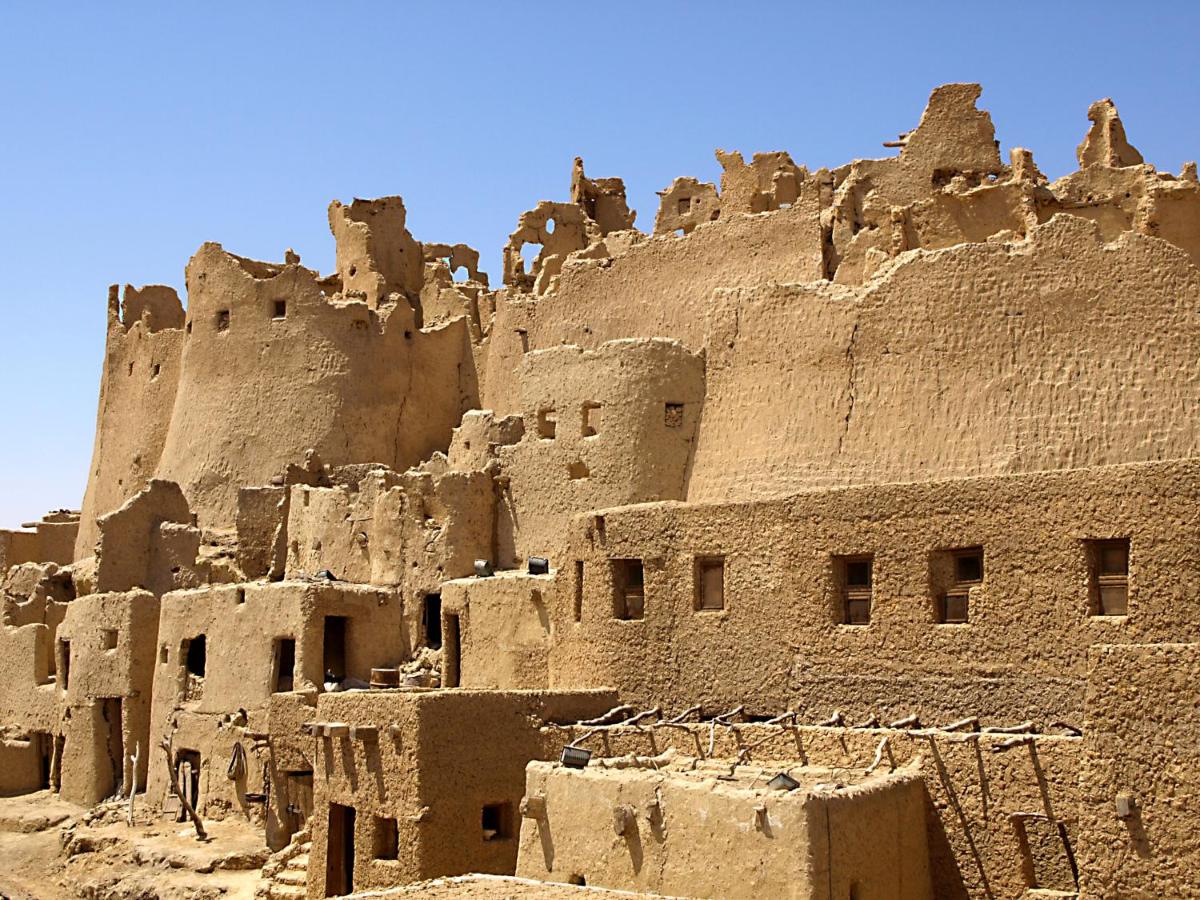 3. Visiting the Oracle Temple
3. Visiting the Oracle Temple
The ruins of the Temple of the Oracle are the oldest building in Siwa Oasis. There is a lot for the mind to fill in after 3000 years have passed among the ruins. If you look attentively, you may still make out some of the hieroglyphic reliefs in the main temple. The oasis can be seen in all its splendor from the temple, which sits on a tiny hill.
A significant number of people used to visit this temple every year. To assert his rightful position as Pharaoh of Egypt and divinely-spawned offspring of the God Amun, Alexander the Great made a pilgrimage there. The army of the Persian monarch Cambyses had attempted something similar hundreds of years before, but the oracle had previously predicted that this expedition would fail. The troops disappeared into the desert on the route to Siwa.
4. Swim in Al Maza and Cleopatra hot spring
The region surrounding the Siwa Oasis is rich with potential hot waters. Our motel staff strongly suggested we visit the Almaza thermal spring. A small fee is required to access the balmy seas and enjoy a dip. This public pool is more private than most, making it an option for women who would otherwise feel uncomfortable swimming in nothing more than a bathing suit or bikini. Even though it closes at around 10, most of its customers come in the evening. Tour vehicles passing through could make it more crowded.
Visitors flock to the Cleopatra Spring in the Siwa Oasis. A scenic spring nearby where you can relax with a cup of tea and some fresh juice. Swimming is a popular activity, with slightly more guys participating than women. They frequently see tourists, and they are used to seeing women swimming in swimsuits.
5. Trekking Jebel Dakrour
South of Cleopatra spring is the suburb of Dakrour on the foot of mountain Dakrour. It is possible to climb the mountain for beautiful views over the oasis and desert. Look out for fossils of shells. At Dakrour Mountain you can also take sand baths that have healing properties according to the locals.
6. Sunset at Lake Siwa and Fatnas Spring
While the Fatnas spring is located a little ways from Siwa, it is one of the most beautiful springs I’ve seen in the oasis. In the spring, you can view Lake Siwa, and after cooling down in the lake, you may visit one of the cafés on the lake’s edge to take in one of the most breathtaking sunsets in the Siwa Oasis. You may do that if you’d want to hire some antique pedal boats and go to the lake.
7. Relax at the Salt lakes
Siwa’s salt lake is located on the outskirts of town. Besides the salt mines where the salt is extracted. The pinkish hue and unusual salt formations of the lake itself are stunning. As you get to the mining pools, you’ll know you’re in a more industrial part of town. The waters, despite their dark blue hues, seem alien. You can swim in them, but the excessive salinity will make you seem more like you’re floating. Like swimming in the Dead Sea in Jordan, it was a chilling and memorable experience. Having any cuts or scrapes on your body may cause severe discomfort, so please be aware of this. You need to replenish your fluids often since you will get dehydrated soon.
What to Eat in Siwa – The Siwans Cusine
Because of its relative isolation from the rest of Egypt, Siwa was able to develop its own distinct culture, including its own cuisine. Siwa is home to some of Egypt’s finest dates and olives. Several plants, including mint and sorrel, may flourish thanks to the mineral water pools serving as an irrigation system. Do order olives or dates as an appetizer while dining out.
The local cuisine Elhuji (eggs, olive oil, and dates) and the dish Tagilla are both made using them (four, dates, olive oil). Siwans don’t regularly consume meat, however, on certain occasions, they may enjoy goat, camel, or lamb. Although Siwa is a popular tourist destination, you can even eat camel at some of the local eateries. Come to Ola for some camel stew. Siwans love their pasta just as much. Essentially, pasta gariya is the Egyptian equivalent of spaghetti bolognese. The main change is using cumin and bits of lamb instead of ground beef.
Cairo To Siwa Road Trip
Traveling to Siwa Oasis from Cairo takes a minimum of 12 hours if you take the direct night bus from West and Mid delta. Every day, overnight buses are traveling between Cairo and Siwa. The buses depart the Cairo terminal at midnight.
There is both a day bus and many options to break up the trip if you’d rather not travel at night. Marsa Matrouh serves as a hub for all buses, and buses from the West and Mid Delta also stop in Alexandria.
Discover the History of Siwa Oasis
Finally, Siwa Oasis has a past of its own. Archaeologists have discovered a 3 million-year-old footprint. It served as a rest spot for travelers and nomads seeking food and water throughout history. There is evidence of human habitation here dating back to the 29th century BC. For instance, the famed Amun temple’s 3000-year-old oracle attracted travelers like Alexander the Great and the Persian ruler Cambyses.
The Siwa people speak a language that they developed independently of other languages in the region. They trace their ancestry back to nomads in the North African desert. The Siwi language is closely related to the Berber language spoken in Morocco. After settling in the oasis, people began developing unique arts and crafts as well as a new method of building with the help of local stones made from clay and salt.
Even though it was far away, the Siwa Oasis was impacted by both Roman and Egyptian civilizations. The ruins show a bustling, international trading post where people came to get away from the heat of the desert and where politicians went to get prophecies and credibility from the famous oracle.
Stunning natural beauty and a rich cultural heritage make the town of Siwa a special place to visit. You may start your day by seeing tombs decorated with elaborate paintings of Egyptian gods, then spend the afternoon relaxing in a salt mine pool, and finish the day with a glass of fresh juice while watching the sun go down over Lake Siwa.

